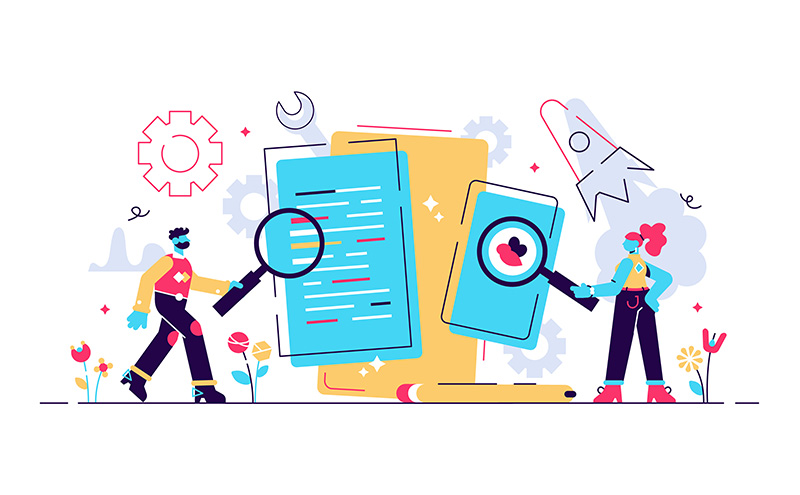API testing (Application Programming Interface Testing) is a software testing type which focuses on the determination if the developed APIs meet expectations regarding the functionality, reliability, performance, and security of the application.
Needless to add, API testing is a significant step on the road to continuous delivery.
Interest in API testing has steadily grown across the years
A research study conducted by SmartBear on API testing among 3,372 software professionals found that around 91% of respondents either currently have, or plan to have a formal API testing process in place in the near future. About 45% of API testers reported that their organization automated more than 50% of test projects. Besides, API quality is considered as a top priority by more than 75% of organizations across industries.
This blog article explores the challenges associated with API test automation, the techno-business features and benefits of world class API testing automation tools.
Types of API Testing
Before we deep dive in to a holistic examination of the industry’s challenge points, let us list the types of API tests:
- Unit Testing (Tests the functionality of individual operation)
- Functional Testing (Focuses on functionality – HTTP response codes, validation of response, error codes)
- Load Testing (necessary where API is dealing with huge data and crash chances are possible)
- Security Testing (Particularly critical when API’s are used to create a link between two different applications)
- Interoperability Testing (To test an API’s accessibility to the intended applications)
- WS compliance Testing (API is tested for adherence to – WS-Addressing, WS-Discovery, WS-Federation, WS-Policy, WS-Security, and WS-Trust – standards)
- Penetration Testing (For assessing vulnerability of API from external sources)
Growing Challenges in API Testing
Next comes the matter of the challenges faced by the API testing industry. A deeper examination of the trends and influencers, reveals the following across different stages :
- Design led challenges
- Limited functional coverage knowledge
- No automated traceability to requirements
- Inadequate coverage of technical validations from tech specs / swagger rules
- Lack of API response validation
- Data led Challenges
- No structured data requirement guidelines and left to the discretion of the test team
- Manual retrieval of test data and conditioning takes 30-50% of test execution time
- Having defined API, its types, and the Industry’s current challenges, it is time to outline the major benefits of API testing.
- Test Execution Challenges
- Manual sequencing of API tests through various tools like Postman, Soap UI etc.
- Lack of regression testing due to time constraints
- Limited parallel execution of tests across functionalities and environments
- Performance led Challenges
- Assets are not merged between performance and functional tests and are maintained separately, usually with different toolsets and approaches
- Massive effort in controlling and maintaining these assets
Top 5 Benefits of API Testing
Having defined API, its types, and the Industry’s current challenges, it is time to outline the major benefits of API testing.
- Access to application without user interface (leading to early error detection)
The major core advantage of API testing is that it provides access to application without users actually having to interact with a potentially disparate system. - Protection from malicious code and breakage (removes vulnerabilities)
API test requires extraordinary conditions and inputs, which protects the application from malicious code and breakage. - Time Efficiency vs. functional and validation testing
API testing is far less time consuming than functional and validation testing. - Cost Effective / Reduces Testing Cost
API test automation requires less code than GUI automated tests thus providing faster test results and better test coverage. - Technology Independent (core language agnostic)
In an API test, the data is interchanged using XML or JSON and compromised of HTTP requests and responses. These all are technology independent and used for development.
Top 7 Questions to make sense of a world class API Test Automation Solution
Finally, for understanding the features of a world class API testing automation tool, work through this checklist.
- Ease of use – Are the workflows simple enough for both technical and non-technical users?
- Percentage of Automation – Is the degree of API automation and regression automation high?
- Scale of Efficiency – What is the overall improvement in test execution productivity?
- Limitless Coverage – What is the overall percentage across business coverage scenarios?
- Operating Expenditures – What is the reduction in overall API testing costs?
- Platform Agnostic – Is the solution environment agnostic across cloud platforms and hybrid architecture?
- Degree of Transparency – What is the level of achieved transparency when integrated with other solutions for analytics and reporting?
The best API Testing solution you need
Maveric’s IQe SNAPI solution addresses the aforesaid seven questions through its cognitive API test automation capabilities. As a robust CI/CQ/CD enabled solution, SNAPI promises up to 50% of effort reduction in API test design, test automation scripting and up to 70% in API performance engineering. Built with features like no code or low code test automation, logical API workflow sequencing, custom ready-to-upload reporting templates and more, SNAPI accelerates API quality cycle journeys. Businesses can take advantage of SNAPI’s best practices for API test automation and drive continuous quality through comprehensive shift-left testing including a wide coverage of functional and non-functional scenarios.
The current pace of digital transformation need businesses to seek for solutions like SNAPI, which can launch high quality API’s in a jiffy.































